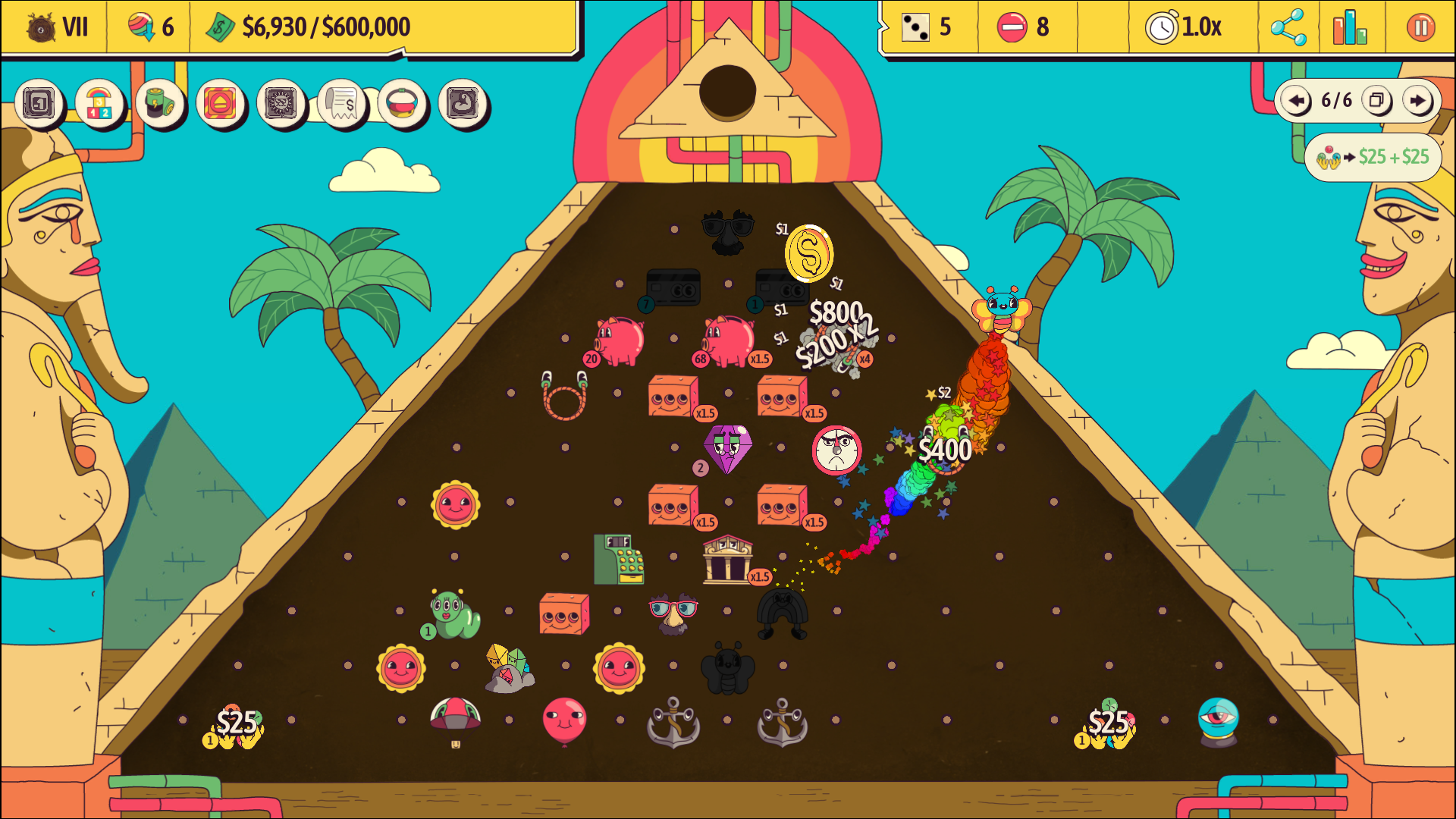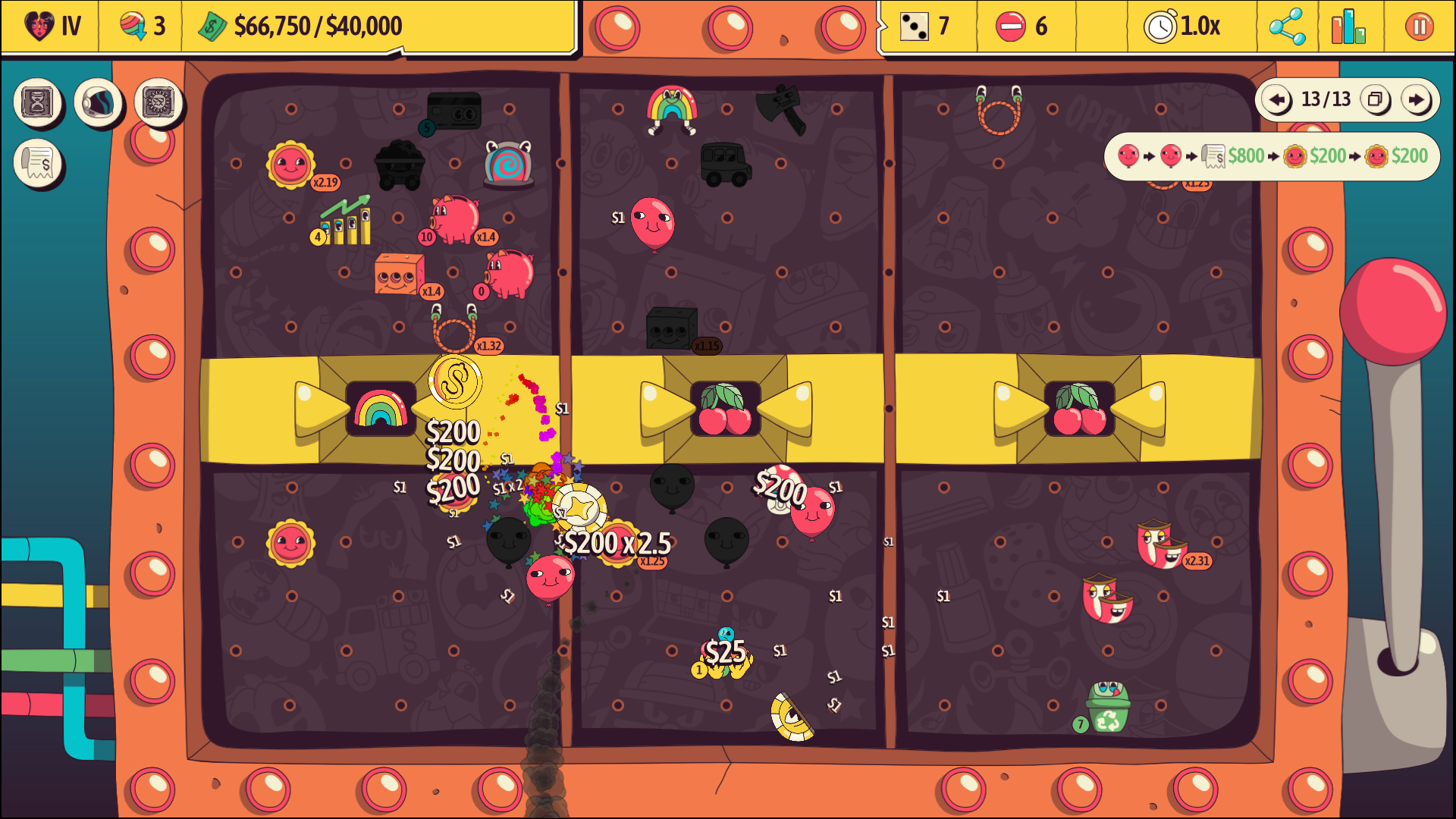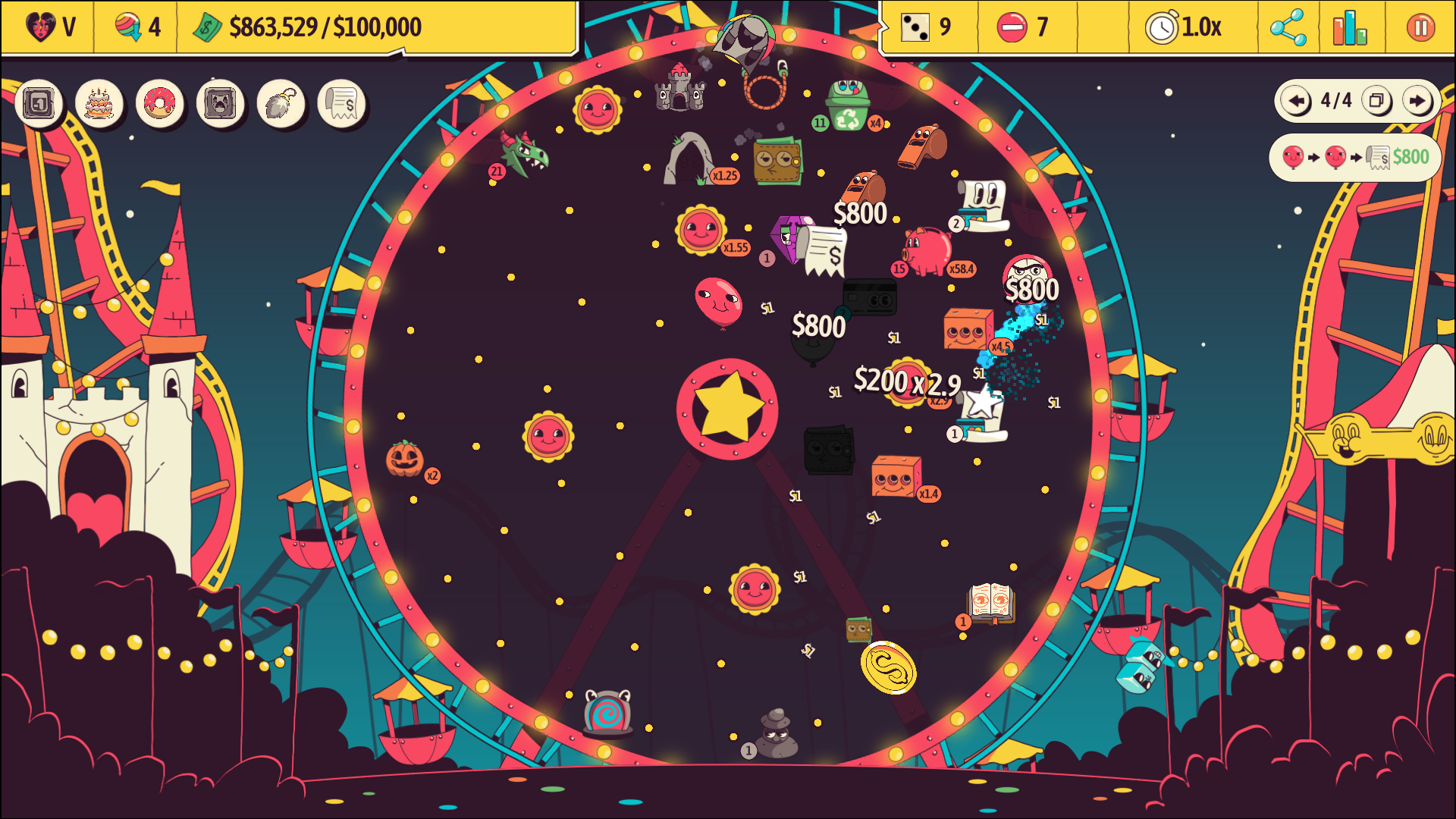Our Verdict
A pachinko-roguelike that properly rewards strategic play. Terrific.
PC Gamer's got your back
What is it? A pachinko machine that's also a strategy roguelike.
Release date December 10, 2024
Expect to pay $11.10/£12.34
Developer newobject
Publisher Raw Fury
Reviewed on Gigabyte G5 (Nvidia RTX 4060, Intel Core i5 12500H, 16GB DDR4-3200)
Steam Deck Verified
Link Official site
In 2007, a game called Peggle was released. In 2008, the world suffered a global economic crisis. To this day I refuse to believe these two facts were unrelated. Peggle was as all-consumingly moreish as it was simple—it was essentially just a pachinko machine, where you fired a ball into a screen full of ‘pegs’ and tried to hit ten orange ones on the way down. The thing is, the only agency you had was the direction you fired the ball in. After that, all you could do is sit back and watch, making it almost entirely luck-based.
Once you finally accepted that, the spell would hopefully break, and you could finally uninstall the bloody thing. But now developer newobject has come up with Ballionaire, a twist on pachinko that adds roguelike deckbuilding elements. Essentially Peggle has gone to college, smartened up, and gotten itself a masters degree in compelling strategy gameplay. Oh no. Oh God no.
The goal is to make enough money to pay a tribute that has to be cleared every seven balls or it’s game over. The starter tribute is 500 dollars, which is worrying, because the board is initially a complete tightwad. Hitting these pegs pays out a pathetic 1 dollar apiece, the kind of financial reward that would embarrass even a games journalist. Luckily, after every ball you get a choice of three obstacles (also, a little confusingly, called balls) that you can add to the table. A trampoline will pay out $200 if you hit it, and bounce the ball upwards. A smiling tree will also pay out $200, but only if you hit it from the bottom up. Ah, but as an apology for that irritating caveat, the tree also gains a small multiplier bonus after every single ball played, meaning it can become a substantial payout in the late game.
Oooh, hang on! If I place the trampoline ball under the tree, I’m far more likely to get that lovely multiplier money. And naturally this kind of synchronicity is what you’re aiming for with every ball you place on the table. Some balls are ‘droppers’ which means they’ll drop another ball when you hit them. These pair well with ‘holders’ that will hold onto any balls that hit them and give some lovely bonus in return (but naturally now the ball is ‘held’, it’s out of play and can’t hit anything else). Crucially, some balls automatically activate at the start of each go, like a fantastic butterfly ball that flies up the screen - only obtainable if you keep a caterpillar ball from being hit for five rounds, naturally.
It means a game that at first feels as random as flipping a coin can be manipulated into one that actually rewards strategy. Sure, sometimes God decides they hate you and nothing tumbles down the screen in the direction you want. But the trick here is to put together a Rube Goldberg machine so sophisticated that such randomness doesn’t stand a chance. There’s a Piggy Bonk ball that pays out $800 for every coin ball it’s holding, and I’ve become obsessed with molding my entire strategy around stuffing coin balls into it, regardless of what tools the game is offering me (this, in roguelike deckbuilding parlance, is known as ‘being an idiot’). Whatever, the runs where my beloved pig stratagem has worked have given me gloriously satisfying payouts.

Once you’ve won a run on the initial pyramid stage, you unlock four more, each nicely varied. One sees the ball being lowered in on a fishing line that’s then reeled back to the top when it hits the bottom. Great for making you try out stuff that relies more on being hit from below. The pinball table, with its two limited-use flippers, is my personal highlight, and I assure you that the Deathwheel stage has been named with no hyperbole whatsoever.
But let's get back to the balls for a moment, in what I’m fast worrying is becoming my most innuendo-laden review ever. Balls are divided into subcategories, such as Agers, Movers, and the aforementioned Droppers and Holders. I had fun slowly working out what all these different terms met. And that’s good news because the game did a pretty lousy job of explaining them to me. There’s a "Ballipedia" tucked away in the pause screen that gives you details on every ball, but it’s one of those irritating tutorial screens that often only gives you half the information you want. "Adjacent triggers to this ball have a +0.1 multi for each coin ball held". OK, cool, and a "trigger" is…? It’s incredibly irritating to mess up a run because you had to just make a guess at how something worked.
It’s not the only place where Ballionaire feels a little incomplete. Win a run and you’ll be rewarded with a currency that you can use on a vending machine to get more ball options for future runs. It won’t take you long to unlock everything (in fact it’ll only take a few seconds if you choose ‘unlock all’ in the pause menu, which is a nice touch). That’s all well and good, but it’s the limited difficulty options that have left me struggling for a reason to come back.

There are five difficulties, which throw predictable challenge increases at you like demanding heftier tribute amounts (yawn). Far more entertaining are the malicious curveballs which force you to place horrible annoyances on your lovely table. One has to be hit 500 times before the end of the game, or you lose. Another will sap all the payout money from the surrounding balls, and can require at least $250,000 before finally pissing off. I love these. Worrying about them while also still trying to hit those required tributes is a great, tricky balancing act.
I just wish it went further. After you’ve cleared the five difficulties, that’s your lot, and it feels like the game could easily keep escalating—look at all the horrible debuffs on offer in the create your own table mode! The lack of an endless mode is disappointing too—it'd be a perfect addition.
But maybe it’s greedy to complain about longevity when I got 20 fun hours out of Ballionaire. I’d rather pick on its irritating repetitive music, or its obnoxious dancing mascot. These are the ridiculously minor moans of someone who had to constantly slap themselves to stop alt-tabbing into Steam and playing more instead of writing this review. It’s a marvelous bookend to a year that opened with the almighty Balatro, and with a few updates, Ballionaire could easily become my new podcast game of choice. For now, it’s the elevator pitch of a Peggle deckbuilder, ball-illiantly executed.
A pachinko-roguelike that properly rewards strategic play. Terrific.


